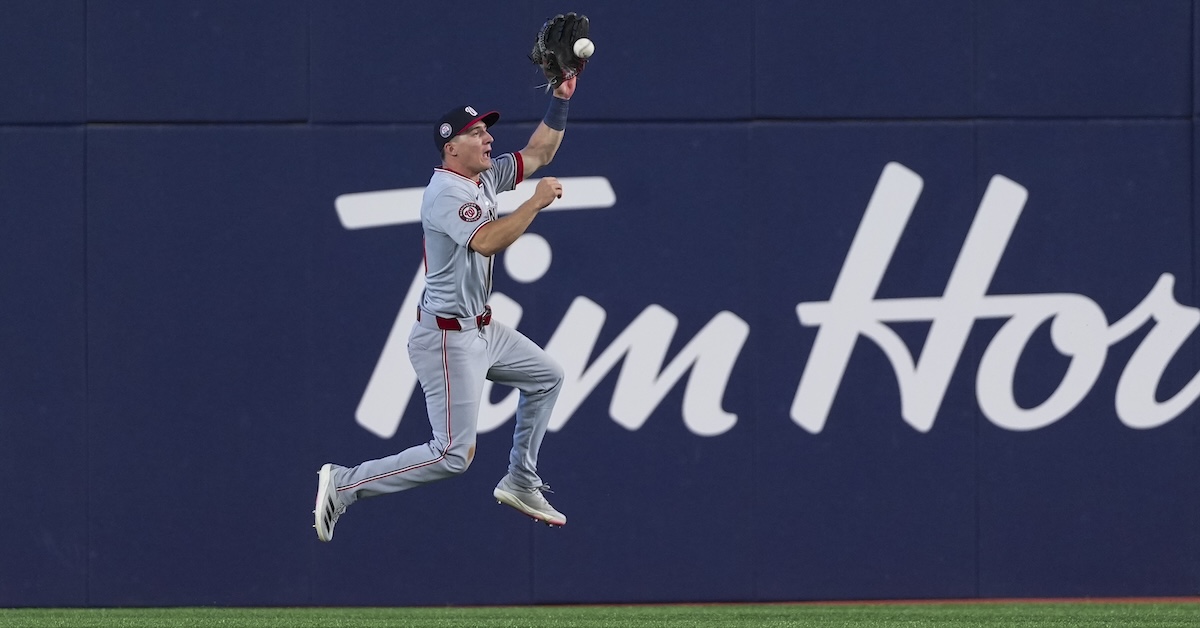
Final week, we obtained a mailbag query from a Jacob Younger fan named David. Truly, it was a multi-part query, and the third sub-question was significantly enjoyable: Are we now in an period of Peak Centerfield Protection? It looks like each staff has a centerfielder that may go get it.
My intestine response to this query was easy: Sure, we’re in all probability in an period of peak heart subject protection. I think the sport has in all probability been in that period as a rule ever since integration, and that peak has saved on rising. I saved David’s different sub-questions for this Saturday’s mailbag, however for this specific one, I assumed it could be enjoyable to suppose it by and dig deeper than I may within the mailbag.
First, let me clarify my intestine response. Greater than some other place, heart subject rewards pure athleticism, and the athletes preserve getting higher. The participant pool retains increasing, and gamers (and people basically) preserve getting greater, stronger, and sooner. All of this implies the bar to make it to the majors in any respect is that a lot larger. I’ve received baseball-specific causes, too. The league retains getting higher at positioning defenders the place the ball is extra more likely to go, permitting them to make much more of their superlative abilities. And since we preserve getting higher at precisely measuring defensive contributions, we’re capable of acknowledge and reward defensive worth higher than ever.
After saying all that, although, I’ve to confess the plain: There’s no option to know the reply definitively. We’ve got treasured little Statcast information about Ty Cobb’s dash velocity or Duke Snider’s response time. Up till this century, play-by-play information is all we’ve to go on in evaluating defenders. Sean Smith analyzed that information to create a defensive metric referred to as Complete Zone, which is what informs the defensive grades on our leaderboards up till 2002, when extra superior defensive metrics like UZR, DRS, and FRV take over. At present’s metrics are nowhere close to excellent, however take a second to cease and take into consideration how far we’ve come. Statcast can let you know precisely how a lot time each outfielder needed to attain each ball, how far they traveled, how briskly they ran, how environment friendly their route was, and the way shortly they reacted because the ball got here off the bat. That’s a great distance from extrapolating from play-by-play information.
I notice that David wasn’t essentially asking concerning the total high quality of heart subject play, however whether or not we’re dwelling in a time once we’ve received a very excessive variety of wonderful defenders. It feels that method, proper? Consider all the middle fielders proper now whom you’d classify as extraordinarily good defenders. My checklist would positively embrace Younger, Pete Crow-Armstrong, Denzel Clarke, Ceddanne Rafaela, Victor Scott II, and Jose Siri, and I wouldn’t argue with anyone who additionally included Byron Buxton, Julio Rodríguez, Jake Meyers, Kyle Isbel, Michael Harris II, Daulton Varsho, Harrison Bader, or Myles Straw. I’m undecided what’s occurred to Brenton Doyle, however earlier than the season we’d have put him on this checklist, as effectively. Rapidly, we’ve received half the groups in baseball with an elite heart subject defender.
Now possibly it’s at all times felt that method. Simply to select a date out of a hat, in the event you return to 1999, you’ve received defensive standouts like Andruw Jones, Mike Cameron, Carlos Beltrán, Steve Finley, Darren Lewis, and Kenny Lofton. Should you return to the Fifties, you’ve received Willie Mays, Mickey Mantle, and Duke Snider all in the identical metropolis. For that purpose, I made a decision to see what I may do with the numbers out there to me.
Even when we will’t know the reply definitively, we will have some enjoyable with the info at our disposal. We’ve got all these totally different numbers – TZ, UZR, DRS, DRP, OAA, FRV – however none of them matches up completely. They’re all working off totally different information sources. They’re all utilizing totally different strategies primarily based on totally different philosophies. They’re totally different eras with totally different types of play. They’re all grading on totally different curves, judging gamers in response to the league common of their specific yr, which makes it very arduous to check gamers from totally different eras. It’s an excellent mess, but it surely signifies that we have to consider another methods to research issues.
Let’s begin by contemplating how heart fielders are incomes their enjoying time. Should you’re not hitting effectively and also you’re not fielding effectively, you’re in all probability not going to remain on the sector. Should you’re doing one effectively, you may get away with doing a worse job on the different. Now check out how heart fielders have hit since 1900.
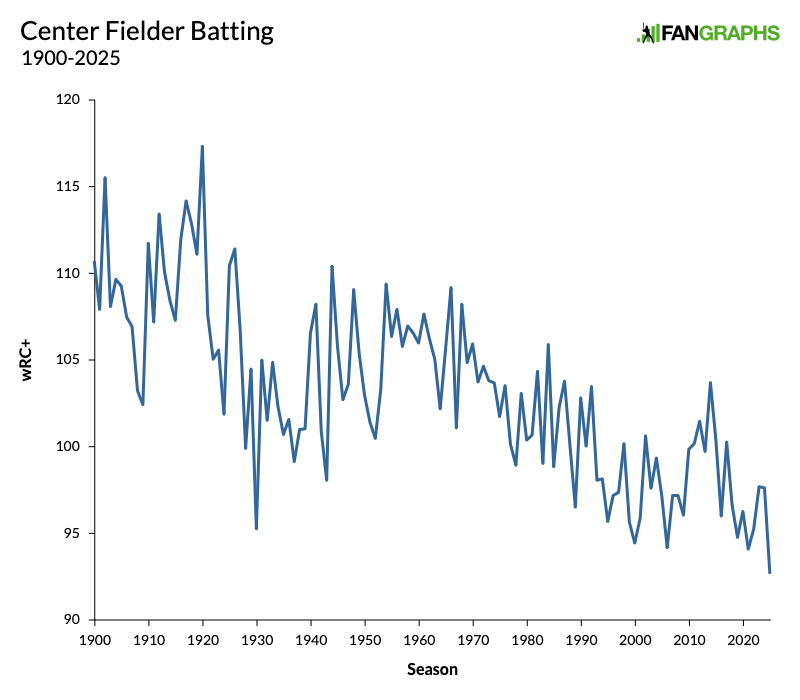
That graph goes nowhere however down, and it’s been on that trajectory because the starting. This season, the league has a mixed wRC+ of 92 at heart subject. If it holds, it will be the bottom mark ever recorded. Nonetheless, heart fielders aren’t worse gamers than ever. Right here’s a graph that reveals defensive run worth per 600 plate appearances. That is simply the Def column that you just see all the best way on the proper of our predominant leaderboard. Earlier than you take a look at it, let me warn you that I’m dishonest slightly bit by displaying it to you.
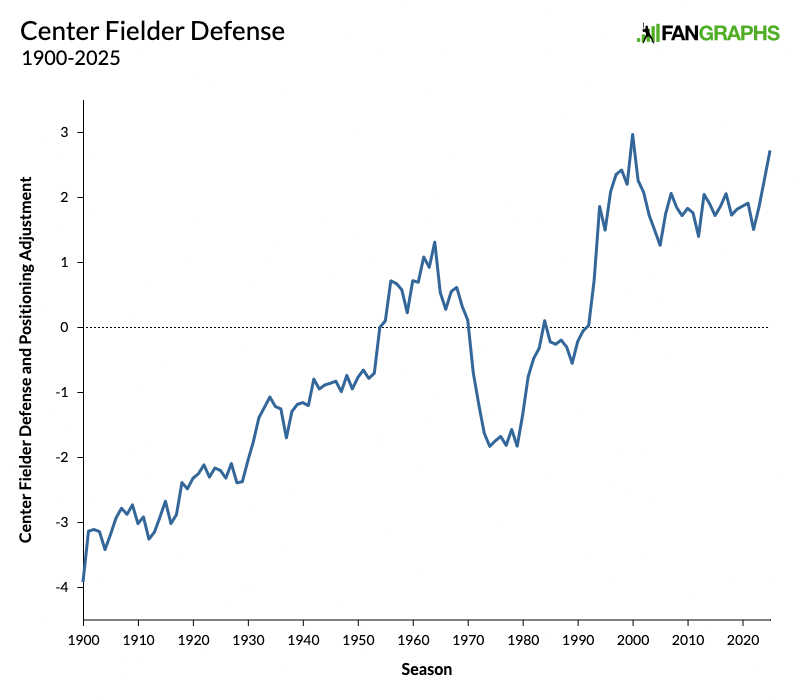
Right here’s how I’m dishonest. Not all people is enjoying heart subject on a regular basis. It simply reveals gamers whose main place is listed as heart subject. We stopped utilizing whole zone for these numbers in 2002, so the more moderen numbers are primarily based on a wholly totally different formulation. However the total pattern is about as unambiguous because it will get. For the primary half of baseball historical past, the numbers say that heart fielders weren’t essentially nice defenders, however that modified within the late Fifties, then cemented itself within the late Eighties.
The massive purpose why that is dishonest, although, is as a result of these numbers embrace a positional adjustment. As you possible know in the event you’ve made it this far, positional changes give extra credit score to harder defensive spots and take credit score from simpler ones. Should you take a look at heart subject defensive metrics for anyone yr, they need to be proper round zero as a rule. Nonetheless excessive the bar is, there can be good, common, and dangerous heart fielders, and so they’ll cancel one another out. This graph is saying that the bar has gotten larger over time, in comparison with different positions on the sector. That’s all of the extra obvious in the event you take a look at the identical graph with the corners included.
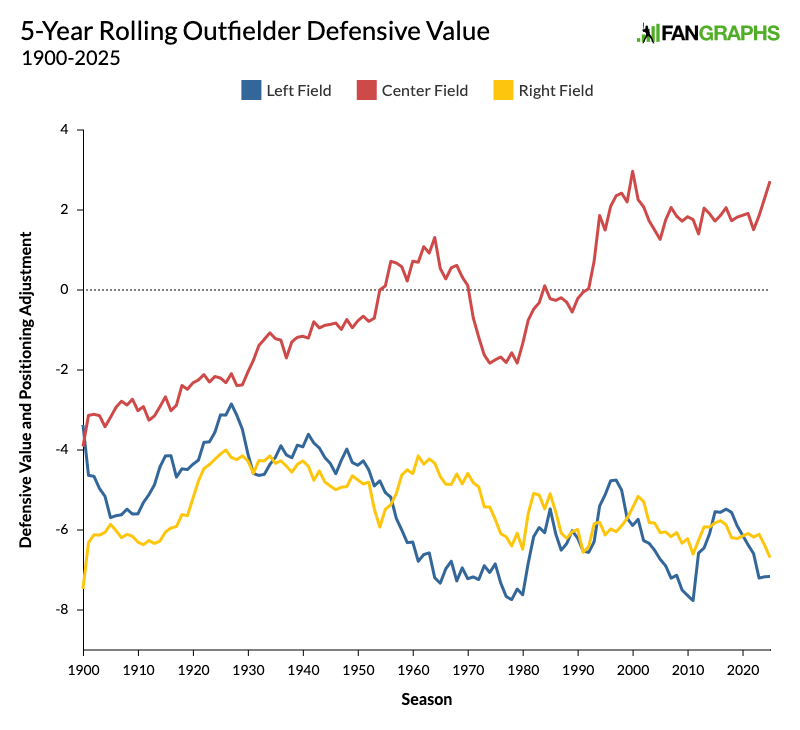
This shouldn’t essentially be my persuasive argument. In any case, I didn’t crunch the numbers and determine on the positional changes myself. I’m simply displaying you their impact on the best way we worth outfielder protection. Nonetheless, once you view this alongside the lowering wRC+ of heart fielders, the conclusion is apparent. Protection has by no means been a extra necessary a part of the job, and the hole between protection in heart subject and the corners has by no means been larger.
Understanding all this, what makes me say that this very second could possibly be peak heart subject protection? For starters, gamers are simply plain sooner as of late – and I don’t simply imply sooner than they have been within the Fifties. We’ve got 11 years of Statcast information monitoring each participant’s common dash velocity. For every year, I calculated the dash velocity of the common heart fielder, prorating it by innings performed (and ignoring any participant who didn’t play sufficient to register a dash velocity). Within the first three years, from 2015 to 2017, the common heart fielder had a dash velocity of 28.4 toes per second. Within the final three years, from 2023 to 2025, the common is 28.6. Which will look like a small change, but it surely’s additionally going down over an awfully brief timeframe. We will truthfully say that heart fielders are measurably sooner as we speak than they have been simply 10 years in the past! It’s not arduous to extrapolate additional again in time.
If we lengthen our gaze a bit to absorb the whole lot of the pitch-tracking period, we will see that balls simply aren’t falling in the best way they used to. The graph beneath goes again to 2008, and it reveals the batting common for each ball categorised as both a line drive or a fly ball hit straightaway (not together with house runs). It begins at .393 and ends at .346. Almost 50 factors of common simply disappeared into the gloves of heart fielders.
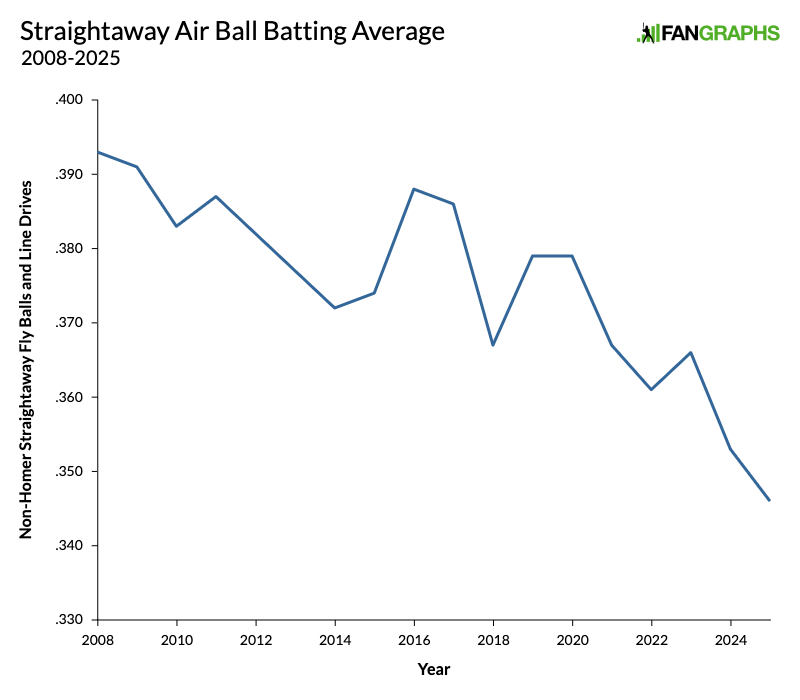
That is fairly stark, however even this graph is underselling the distinction a bit. Right here’s the identical graph, however now it consists of wOBA, too. The brand new pink wOBA line falls even steeper than the blue line. Middle fielders aren’t simply robbing batters of extra hits. They’re additionally higher at holding batters to singles and stopping extra-base hits. That drop-off is sort of 60 factors.
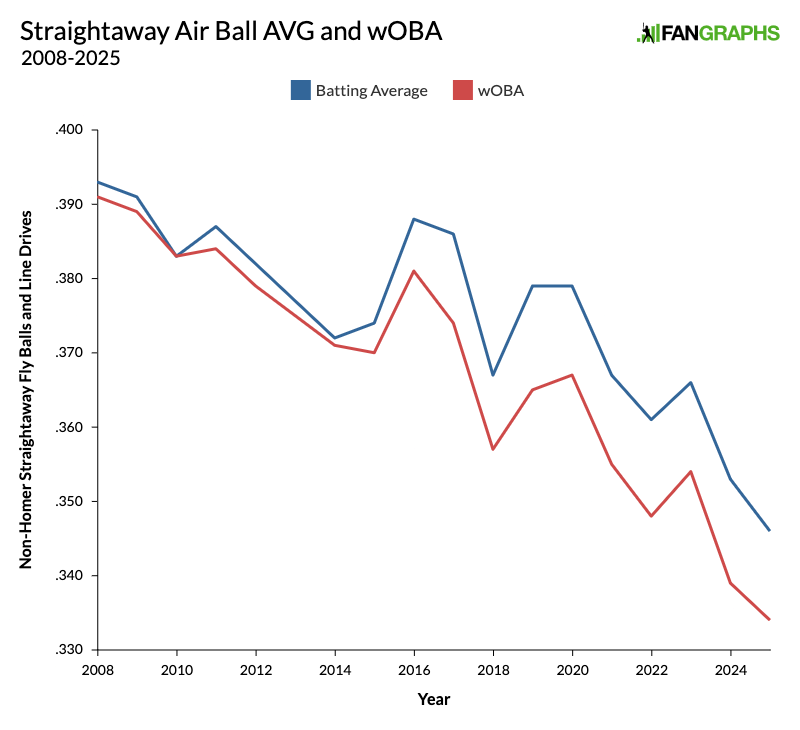
I feel that is about as definitive because it will get. Since 2008, there’s by no means been a worse time to hit the ball to heart subject. As far as we will inform, protection has by no means been a extra necessary a part of a middle fielder’s job, and heart fielders have by no means been so significantly better than nook outfielders. In all, we’re in all probability at peak heart subject protection proper now. And we’ll in all probability keep there.













